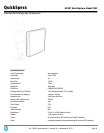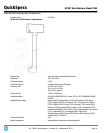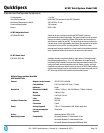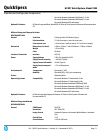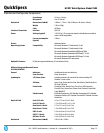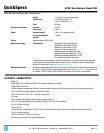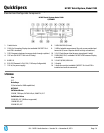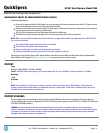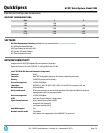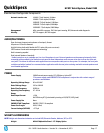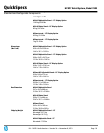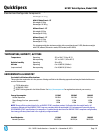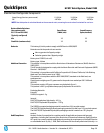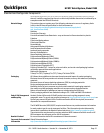
REDUNDANT ARRAY OF INDEPENDENT DRIVES (RAID)
Flexible implementation:
DriveLock is supported while in RAID mode. Users can manage the DriveLock password from within F10 Setup. Locked
drives will be displayed as such in the RAID option ROM interface.
Hard drive information can be viewed within F10 Setup while in RAID mode. Previously, the hard drives will not appear
in Drive Configuration when switching to RAID mode.
DPS Self Test can be executed on physical hard drives while in RAID mode.
The RAID Setup Utility (accessed through CTRL-I) can be protected by the F10 Setup password.
NOTE:
RAID 1 is the only RAID configuration offered via factory configurations. RAID is not supported on the 32GB SSD. The
pre-configured systems:
Are complete RAID systems and have both drives installed.
Have the necessary Option ROM configuration.
Are pre-loaded and pre-installed with all required Intel software.
Include a preinstalled operating system that is mirrored mode out of the box.
Please refer to the HP White Paper titled "Advanced Host Controller Interface (AHCI) and Redundant Array of Independent
Disks (RAID) on HP Compaq PCs" at:
http://www.hp.com
for more information and instructions.
MEMORY
Type
Non-ECC, DDR3 SDRAM, 1333 MHz, SODIMM
(
NOTE:
1600 MHz memory may ship on rp7 but the memory will not run at 1600MHz. It will clock down to 1333MHz)
Maximum
16 GB
# of Slots
2
NOTE:
Full availability of 4 GB or more of memory requires a 64-bit operating system. With Windows 32-bit operating
systems, the amount of usable memory is dependent upon your configuration, so that above 3 GB all memory may not be
available due to system resource requirements.
MEMORY UPGRADES
Memory upgrades are accomplished by adding single or multiple DIMMs of the same or varied sizes. This chart does not
represent all possible memory configurations. The HP RP7 Retail System supports non-ECC DDR3 PC3-10600 (1333 MHz) and
PC3-8500 (1066 MHz) memory.
CAUTION:
You must shut down the Retail System and disconnect the power cord before adding or removing memory
modules. Regardless of the power-on state, voltage is always supplied to the memory modules as long as the Retail System
is plugged in to an active AC outlet. Adding or removing memory modules while voltage is present may cause irreparable
damage to the memory modules or system board.
QuickSpecs
HP RP7 Retail System, Model 7800
Standard and Configurable Components
DA - 14350 North America — Version 14 — November 8, 2013
Page 15




